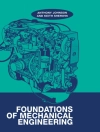This book reports on the state of the art in physical ergonomics and addresses the design of products, processes, services, and work systems to ensure they are productive, safe, and enjoyable for people to use. The human body’s responses to physical and physiological work demands, strain injuries from repetition, vibration, force, and posture are the most common types of issues examined, along with their design implications. The book explores a wide range of topics in physical ergonomics, including the consequences of repetitive motion, materials handling, workplace safety, the usability of portable devices, design, working postures, and the work environment.
Mastering physical ergonomics and safety engineering concepts is fundamental to creating products and systems that people can safely and conveniently use, as well as avoiding stresses and minimizing the risk of accidents. Based on the AHFE 2018 Conference on Physical Ergonomics and Human Factors, held on July 21–25, 2018, in Orlando, Florida, USA, this book provides readers with a comprehensive perspective on the current challenges in physical ergonomics, which is a critical aspect in the design of any human-centered technological system, and for factors influencing human performance.
Tabela de Conteúdo
Design Process for an Ergonomic Solution to The Police Officer Duty Belt.- Rethinking Ergonomics Design.- Ergonomic Design Solution for Reducing Smoke Build-Up Inside Rural Kitchens in Kenya.- Steel Surface Defects Detection Based on Deep Learning.- Ergonomic Work Analysis at Plant Nurseries of a Portuguese Municipality.- Study on Upper Limb Reachable Threshold in Driving Posture.- Stress at Work and Physical Load in Professional Sport.- Research on the Contact Force of Fingers When Grasping Bottles.- Evaluation of Worker Satisfaction with the Use of Hand Tools in a Poultry Slaughterhouse.- Effects of Upper Limb Fatigue on Gait Stability.












